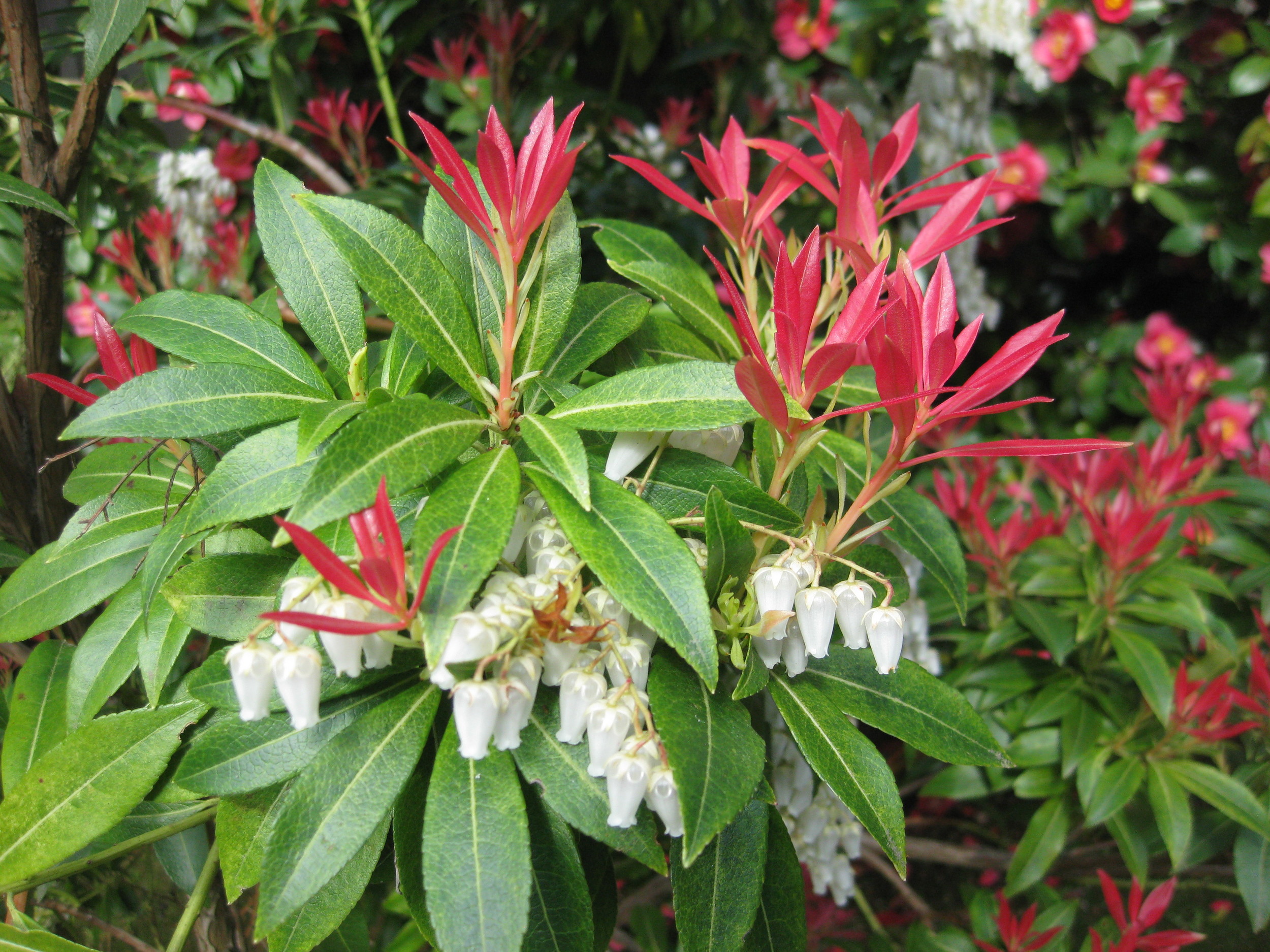Pieris japonica, an Underappreciated Beauty
Pieris japonica, commonly known as Lily of the Valley shrub, is a native of Japan and adds subtle beauty to the early spring garden. Photo: Andrew Law.
The Seattle Japanese Garden is closed for the winter, so I’ve chosen a shrub for plant of the month that’s showy now, both in the garden and throughout Seattle, and that will be even more beautiful when the garden opens again on March 1st. Pieris japonica is a broadleaf evergreen shrub that’s commonly planted in Seattle -- in residential and public landscapes. In fact, it’s so common that it doesn’t get much respect. Old, mal-pruned & neglected plants don’t look their best, but this shrub often survives in adverse conditions.
In the conditions that it prefers (moist, organic, well-drained, acid soils, and part or open shade), Pieris is an elegant shrub that’s attractive in all seasons. It blooms in spring with drooping clusters of small, white, urn-shaped flowers that are a favorite of our native mason bees, an important pollinizer. The flowers resemble those of the perennial plant, Lily of the Valley – hence its common name, Lily of the Valley Shrub. Other common names are Japanese Andromeda and Japanese Pieris.
However, Pieris japonica is also attractive in fall and winter, because its flower buds form in autumn and remain showy for months -- before bloom begins in March or April. After flowering, its new leaf growth emerges in various tones of red or bronze, depending upon the cultivar. The narrow evergreen foliage is attractive, and the elegance of its branching habit is unusual for an evergreen shrub. Many dwarf forms, forms with variegated (two-toned) leaves, and forms with red or pink flowers are readily available at local retail nurseries. See the Great Plant Picks website (www.greatplantpicks.org) for information on some of the best cultivars -- and suggestions for perennial plants that combine well with them.
Photo: Aleks Monk.
Pieris japonica is native to the hills of Japan (Honshu, Shikoku & Kyushu), where it is known as “asebi.” It’s tolerant of sea breezes and pruning, but requires periodic watering in our climate. Historically, it was often planted in tea gardens and on the grounds of shrines and temples – usually in groups, rather than singly. It was also planted in shrubbery & under trees in other types of gardens. The wood was used for charcoal, and branches were used as alcove posts in tea rooms. Leaves and branches contain poisonous compounds, which makes it deer resistant.
There are many Pieris throughout the Seattle Japanese Garden -- on several sides of the pond, and in the Teahouse Garden. Before the garden opens again, we can anticipate their beauty by looking for them in our neighborhoods, in the Arboretum, and in other Seattle Parks.
Corinne Kennedy is a trained guide for Seattle Japanese Garden and a contributor to the garden's blog.


